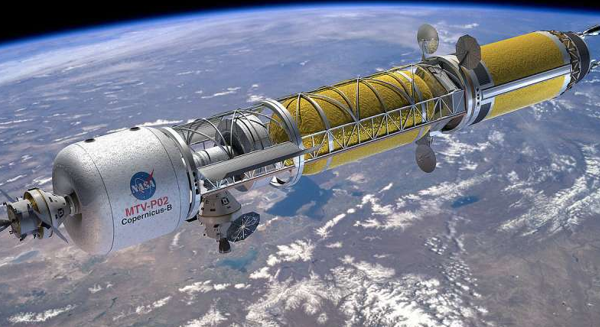
NASA Nuclear Energy Emerging Technology Top 8 Highlights
Nuclear Energy emerging technology plays a significant role in space technology.
Here we have captured NASA Nuclear Energy Emerging Technology Top 8 Highlights for 2019. The eight (8) highlights are a snapshot of some of the best happenings with NASA and nuclear energy emerging technology over the past year.
#1 NASA Nuclear Energy Emerging Technology Highlight
Modeling of corrosion-induced blockages on radiation heat transfer by using RELAP5-3D
Abstract
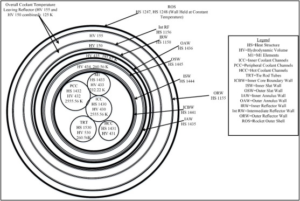 Nuclear power propulsion for space applications is essential for long-term high payload missions. Several nuclear reactor types were investigated by the Nuclear Engine for Rocket Vehicle Application (NERVA) program of National Aeronautics and Space Administration (NASA). Due to the requirement of long-term missions, studies need to be conducted concerning the impact of planned/unplanned transients on nuclear thermal rockets.
Nuclear power propulsion for space applications is essential for long-term high payload missions. Several nuclear reactor types were investigated by the Nuclear Engine for Rocket Vehicle Application (NERVA) program of National Aeronautics and Space Administration (NASA). Due to the requirement of long-term missions, studies need to be conducted concerning the impact of planned/unplanned transients on nuclear thermal rockets.
#2 NASA Nuclear Energy Emerging Technology Highlight
NASA Invests in 18 Potentially Revolutionary Space Tech Concepts
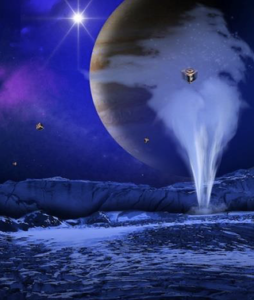 Smart spacesuits and solar surfing may sound like the stuff of science fiction, but they are just two of the technology concepts NASA has selected for further research as part of the NASA Innovative Advanced Concepts (NIAC) program. The program will fund 18 studies to determine the feasibility of early-stage technologies that could go on to change what’s possible in space.
Smart spacesuits and solar surfing may sound like the stuff of science fiction, but they are just two of the technology concepts NASA has selected for further research as part of the NASA Innovative Advanced Concepts (NIAC) program. The program will fund 18 studies to determine the feasibility of early-stage technologies that could go on to change what’s possible in space.
#3 NASA Nuclear Energy Emerging Technology Highlight
Accelerator-Based Tests of Shielding Effectiveness of Different Materials and Multilayers using High-Energy Light and Heavy Ions
Abstract
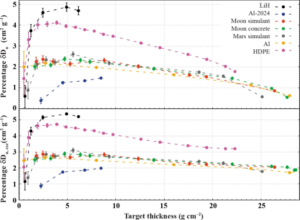 The roadmap for space exploration foresees longer journeys and further excursions outside low-Earth orbit as well as the establishment of permanent outposts on other celestial bodies, such as the Moon or Mars. The design of spacecrafts and habitats depends heavily on the mission scenario and must consider the radiation protection properties of the structural components as well as dedicated shielding. In fact, short- and long-term effects caused by exposure to cosmic radiation are now considered among the main health risks of space travel. One of the current strategies is to find multifunctional materials that combine excellent mechanical properties with a high shielding effectiveness to minimize the overall load.
The roadmap for space exploration foresees longer journeys and further excursions outside low-Earth orbit as well as the establishment of permanent outposts on other celestial bodies, such as the Moon or Mars. The design of spacecrafts and habitats depends heavily on the mission scenario and must consider the radiation protection properties of the structural components as well as dedicated shielding. In fact, short- and long-term effects caused by exposure to cosmic radiation are now considered among the main health risks of space travel. One of the current strategies is to find multifunctional materials that combine excellent mechanical properties with a high shielding effectiveness to minimize the overall load.
#4 NASA Nuclear Energy Emerging Technology Highlight
Small Stirling Technology Exploration Power for Future Space Science Missions
Conference Abstract
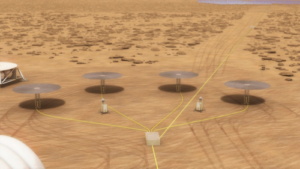 High efficiency dynamic Radioisotope Power Systems (RPS) could be mission enabling for low power space applications such as small probes, landers rovers, and communication repeaters. These applications would contain science instruments and be distributed across planetary surfaces or near objects of interest where solar flux is insufficient for using solar cells. Small RPS could be used to provide power for sensing radiation, temperature, pressure, seismic activity, and other measurements of interest to planetary scientists.
High efficiency dynamic Radioisotope Power Systems (RPS) could be mission enabling for low power space applications such as small probes, landers rovers, and communication repeaters. These applications would contain science instruments and be distributed across planetary surfaces or near objects of interest where solar flux is insufficient for using solar cells. Small RPS could be used to provide power for sensing radiation, temperature, pressure, seismic activity, and other measurements of interest to planetary scientists.
#5 NASA Nuclear Energy Emerging Technology Highlight
Identifying and Mitigating Barriers to the Adoption of Dynamic Radioisotope Power Systems for Space Flight
Conference Abstract
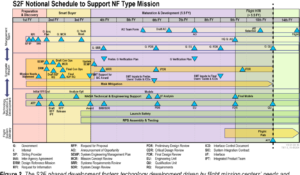 Given increasing complexity of many safety-critical systems, many organizations like NASA need to identify when, where, and how inappropriate perceptions of risk and anchoring of trust affect technology development and acceptance, primarily from the perspective of engineers and related management. Using the adoption of Dynamic Radioisotope Power Systems (RPS) for space exploration as a backdrop, we define and explain factors that contribute to inappropriate risk perception of various stakeholders. Three case studies (Mars Science Laboratory, Parker Solar Probe, and Titan Mare Explorer) demonstrate how NASA considered Dynamic RPS but decided against the new technology for less efficient alternatives of solar power and solid-state RPS. In the case of Dynamic RPS, increased design complexity that differs from previous successful solid-state power systems flown on the Voyager probes and Cassini spacecraft is one contributing factor, but not the only one.
Given increasing complexity of many safety-critical systems, many organizations like NASA need to identify when, where, and how inappropriate perceptions of risk and anchoring of trust affect technology development and acceptance, primarily from the perspective of engineers and related management. Using the adoption of Dynamic Radioisotope Power Systems (RPS) for space exploration as a backdrop, we define and explain factors that contribute to inappropriate risk perception of various stakeholders. Three case studies (Mars Science Laboratory, Parker Solar Probe, and Titan Mare Explorer) demonstrate how NASA considered Dynamic RPS but decided against the new technology for less efficient alternatives of solar power and solid-state RPS. In the case of Dynamic RPS, increased design complexity that differs from previous successful solid-state power systems flown on the Voyager probes and Cassini spacecraft is one contributing factor, but not the only one.
#6 NASA Nuclear Energy Emerging Technology Highlight
Solar electric propulsion for human mars missions
Abstract
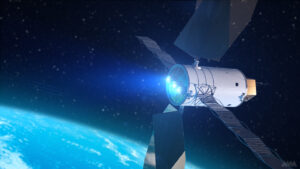 While solar electric propulsion (SEP) is being widely considered for cargo transport to Mars, its value for propelling fast human missions is often viewed as marginal. This conclusion is driven by the high electric power requirement (multi megawatts) of a fast human spacecraft, coupled to the low power density of traditional solar arrays. For these applications, nuclear electric propulsion (NEP) appears to provide a better electric alternative. However, recent progress in the field of thin film photovoltaic cells and large deployable structures may, at least in the short-term, challenge this conclusion. Although ultimately NEP systems might very well become the mainstay of fast human deep space transport, we examine the human SEP option as an attractive intermediate path on this journey, one that capitalizes on the rapid evolution of the solar array technology being experienced today.
While solar electric propulsion (SEP) is being widely considered for cargo transport to Mars, its value for propelling fast human missions is often viewed as marginal. This conclusion is driven by the high electric power requirement (multi megawatts) of a fast human spacecraft, coupled to the low power density of traditional solar arrays. For these applications, nuclear electric propulsion (NEP) appears to provide a better electric alternative. However, recent progress in the field of thin film photovoltaic cells and large deployable structures may, at least in the short-term, challenge this conclusion. Although ultimately NEP systems might very well become the mainstay of fast human deep space transport, we examine the human SEP option as an attractive intermediate path on this journey, one that capitalizes on the rapid evolution of the solar array technology being experienced today.
#7 NASA Nuclear Energy Emerging Technology Highlight
Using gamma ray monitoring to avoid missing the next Milky Way Type Ia supernova
Abstract
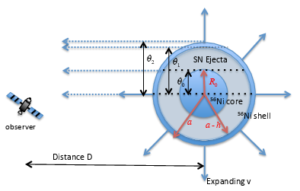 AMilkyWay Type Ia supernova (SNIa) could be unidentified or even initially unnoticed, being dim in radio, X-rays, and neutrinos, and suffering large optical/IR extinction in the Galactic plane. But SNIa emit nuclear gamma-ray lines from 56Ni→56Co→56Fe radioactive decays. These lines fall within the Fermi/GBM energy range, and the 56Ni 158 keV line is detectable by Swift/BAT. Both instruments frequently monitor the Galactic plane, which is transparent to gamma rays.
AMilkyWay Type Ia supernova (SNIa) could be unidentified or even initially unnoticed, being dim in radio, X-rays, and neutrinos, and suffering large optical/IR extinction in the Galactic plane. But SNIa emit nuclear gamma-ray lines from 56Ni→56Co→56Fe radioactive decays. These lines fall within the Fermi/GBM energy range, and the 56Ni 158 keV line is detectable by Swift/BAT. Both instruments frequently monitor the Galactic plane, which is transparent to gamma rays.
#8 NASA Nuclear Energy Emerging Technology Highlight
Advances in space radiation physics and transport at NASA
Abstract
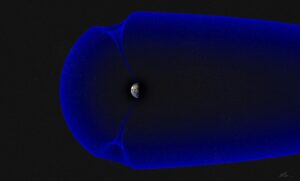
The space radiation environment is a complex mixture of particle types and energies originating from sources inside and outside of the galaxy. These environments may be modified by the heliospheric and geomagnetic conditions as well as planetary bodies and vehicle or habitat mass shielding. In low Earth orbit (LEO), the geomagnetic field deflects a portion of the galactic cosmic rays (GCR) and all but the most intense solar particle events (SPE). There are also dynamic belts of trapped electrons and protons with low to medium energy and intense particle count rates. In deep space, the GCR exposure is more severe than in LEO and varies inversely with solar activity. Unpredictable solar storms also present an acute risk to astronauts if adequate shielding is not provided. Near planetary surfaces such as the Earth, moon or Mars, secondary particles are produced when the ambient deep space radiation environment interacts with these surfaces and/or atmospheres.

